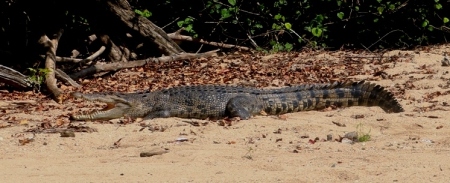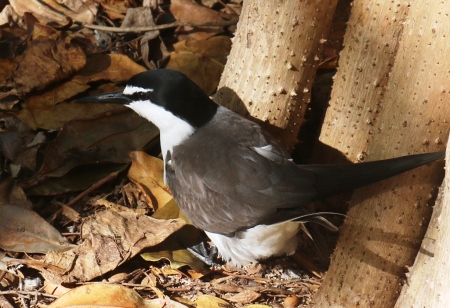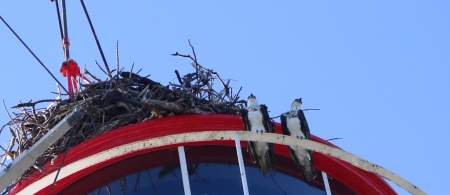On our trip to Australia, we had two things that we wanted to do that we hadn’t done before. The first was to visit the Daintree rainforest (good photos) in Northern Queensland. The rainforest is the oldest in the world – 180 million years – much older than the Amazon equivalent. It is a vast forest covering 12,000 square kilometres and our Daintree river trip host told us that it has 1034 native trees. To put this in perspective, he told us that the UK has 37 and the USA 300+. On the river trip, you look up to the huge swathes of trees but you cannot really distinguish different species of tree and fern until you walk into the forest itself. A short way up the river, we came upon a female crocodile (photo below) on the river bank. Crocodiles are perhaps fascinating to some and while it was good to see one in its natural habitat, they are not the word’s most attractive creatures, although the patterns on their hide are elegant.

It is when you go into the rainforest itself that you appreciate the variety of trees and ferns on display. The boat host advised us ” in the forest itself, don’t look AT the trees, look THROUGH THEM” and this was very good advice. In the photo below (from Creative Commons) you can see some of the variety of the trees and the ubiquitous ferns which are very attractive. It is fascinating to look at even this relatively small space and note how many different trees there are and how they are differently shaped.

In the next photo (my own) you can see the vibrant colours of this large leafed fern. We had just missed a rainshower and the leaves were sparkling in the afternoon light. Behind this fern , you can see a variety of smaller ferns and you can read much more about the Daintree ferns, which first appeared 325 million years ago on this helpful site. It would have been wonderful to go on an extended walk with a guide in the rainforest but time was limited. One for a future visit.

The other reason for choosing Port Douglas as the first destination on our trip was to visit the Great Barrier Reef (great video). The reef is under threat from climate change and there have been dire warnings that, with further warming of the seas, it could disappear in 10-20 years. We went on a boat trip to the Low Isles, a half hour of huge waves and some extreme ups and downs. When you get to the island, it looks idyllic – see photo below – with its pristine sandy beach, lighthouse and trees.

Once on the island, we were given thin suits to protect us from jellyfish, which are called stingers in this part of the world. Confusingly for British people living in Australia, jellyfish are also called bluebottles. We were then taught how to use the snorkelling masks and flippers. It was our first experience of snorkelling and what we saw under the water made it a worthwhile trip. Once we were directed to a buoy not far off shore, we saw the range of coral on the ocean floor and a huge variety of fish, including parrot fish (good photo) and angel fish (good video). We also saw some fairly large turtles in the water nearby.
After the snorkelling, we were taken on a short tour of the island and we saw numerous terns which were nesting. Unlike the local arctic terns which nest near Dunbar in a protected area and which will dive approaching humans, these common terns (photo below) went about their business quietly. Close up, this is a most attractive bird and the background of spiky tree trunks and leaves show off its sharp colours and distinctive black/blue line across its eyes.

On the island, there is an impressive lighthouse which was built in 1878. Our guide asked us to look up towards the light and we did, we could see two osprey chicks (photo below) sitting at the edge of the nest. I was hoping that the birds might look down to improve the photo but they remained still, while haughtily ignoring our presence far below. The birds looked smaller than they are, especially sitting next to the huge ramshackle nest.

This was a very satisfying day for us – a new adventure on an idyllic island surrounded by the warm ocean, on which the sun glinted and the water sparkled.